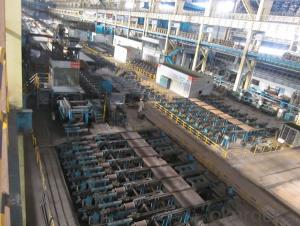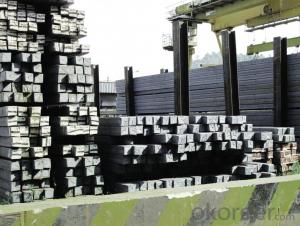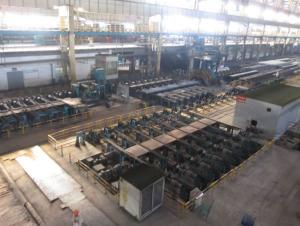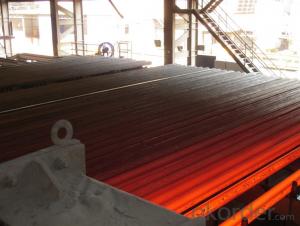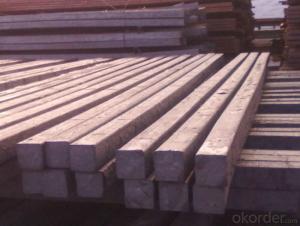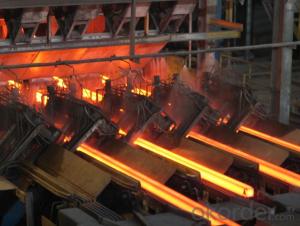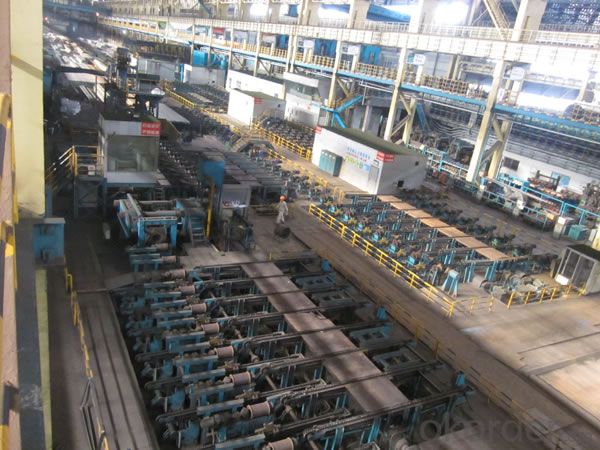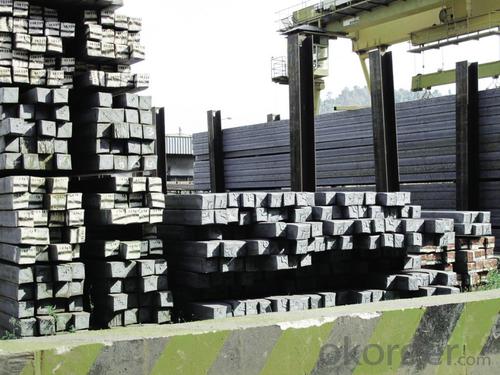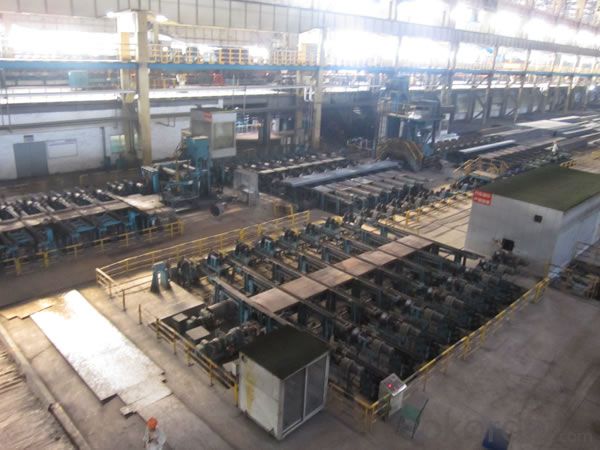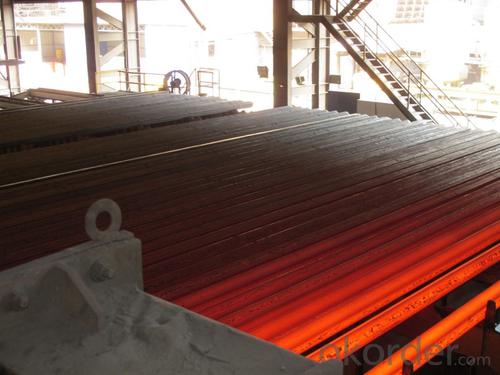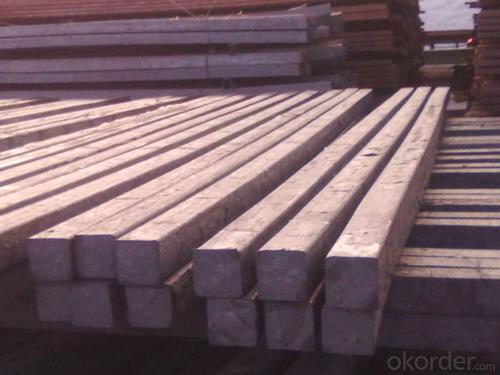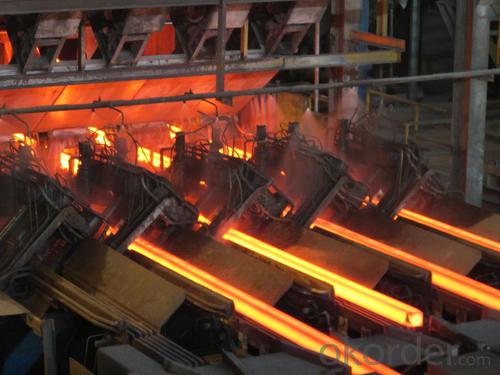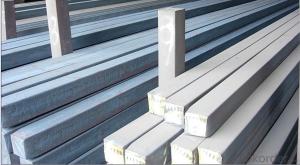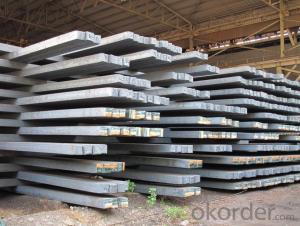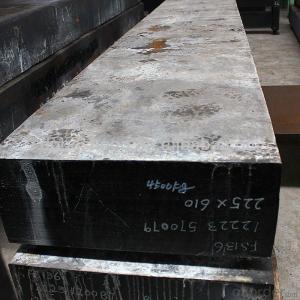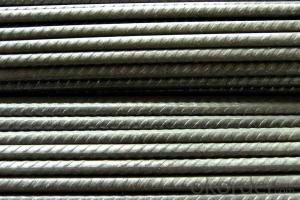Square Steel Billet Q235 Grade Prime Quality 1#
- Loading Port:
- Tianjin
- Payment Terms:
- TT OR LC
- Min Order Qty:
- 2000 m.t
- Supply Capability:
- 50000 m.t/month
OKorder Service Pledge
OKorder Financial Service
You Might Also Like
Description of Square Steel Billet Q235 Grade Prime Quality 1#
M. S. Billets are used for rolling of TMT Re-Bars of Fe415 and Fe500 Grade and various other structural steel products.
CRS Billets are used for rolling of CRS TMT Re-Bars.
Special Alloy Billets are used for rolling of any special grade TMT Re-Bars like Earthquake resistant TMT Re-Bars and for special grade structural steel products.
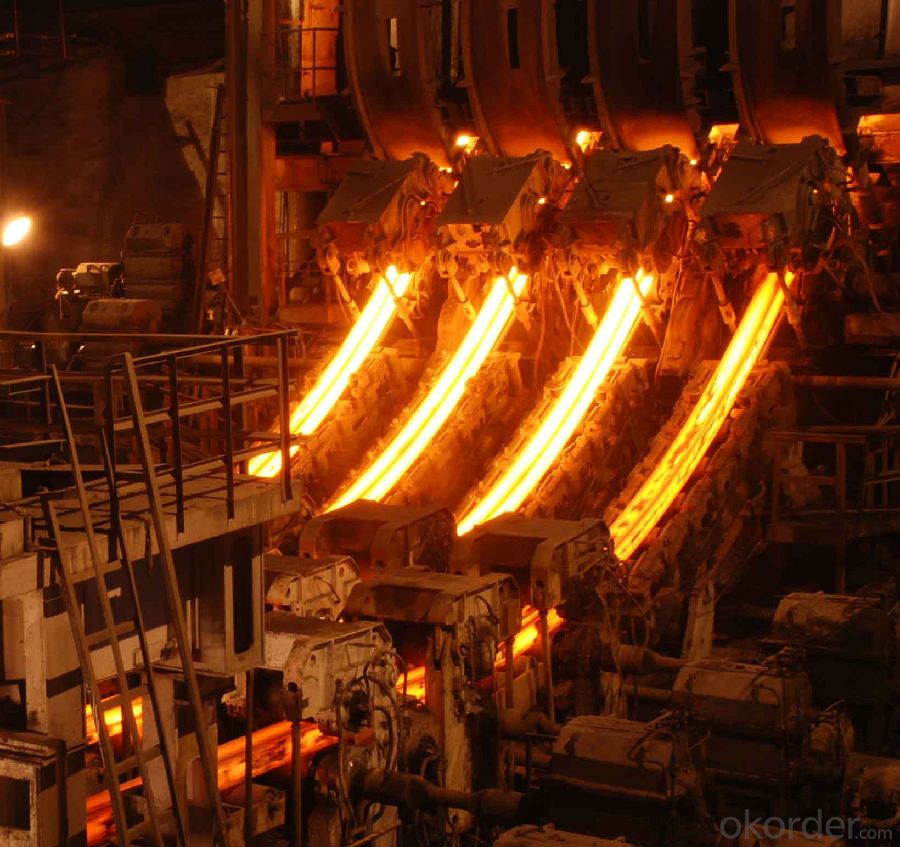
Main Feature Square Steel Billet Q235 Grade Prime Quality 1#
Raw elements(C,Fe,Ni,Mn,Cr,Cu.)---Smelted ingots by AOD finery---hot rolled into black suface---pickling in acid liquid---cold drawn----polished by automatically machine--- cutting into pieces---checking quanlity
Applications of Square Steel Billet Q235 Grade Prime Quality 1#
Widely Used in the areas such as Stainless Steel Fasteners, Chains, Kitchen and Sanitary wares, Furniture handles, Handrails, Electroplating and Electrolyzing pendants, Foods, Electron, Petroleum, Construction and Decoration, etc. Products have a high strength after cold-working. Electronic products parts, Medical appliance, Springs, Bus Inside and Outside packaging and building, Street Lamp Posts, etc. Decoration materials and Outdoor Publicity Billboard. Used for the products which have the Anti-Stress Corrosion requirement. Electron Products, Table-wares, Bolts, Nuts, Screen Meshes, Cumbustors and so on.
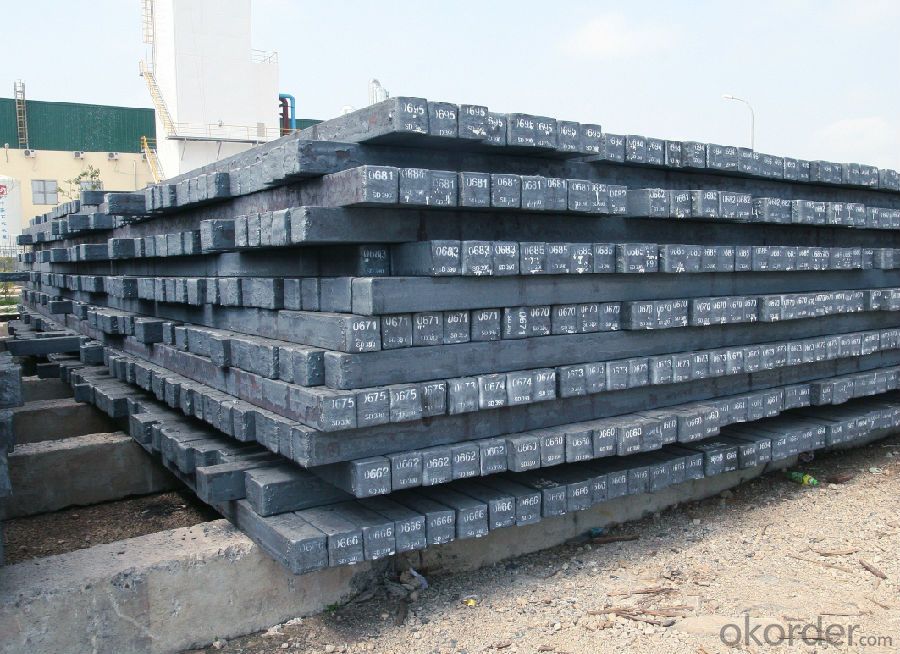
Specifications of Square Steel Billet Q235 Grade Prime Quality 1#
| Standard | C(%) | Mn(%) | S(%) | P(%) | Si(%) |
| Q195 | ≤0.12 | ≤0.50 | ≤0.040 | ≤0.035 | ≤0.30 |
| Q235 | ≤0.20 | ≤1.40 | ≤0.045 | ≤0.045 | ≤0.35 |
| Q275 | ≤0.22 | ≤1.50 | ≤0.045 | ≤0.045 | ≤0.35 |
| 20MnSi | 0.17-0.25 | 1.2-1.6 | ≤ 0.050 | ≤ 0.050 | 0.40-0.80 |
| 3SP | 0.14-0.22 | 0.40-0.85 | ≤ 0.050 | ≤ 0.040 | 0.05-0.15 |
| 5SP | 0.28-0.37 | 0.50-1.00 | ≤ 0.050 | ≤ 0.040 | 0.15-0.30 |
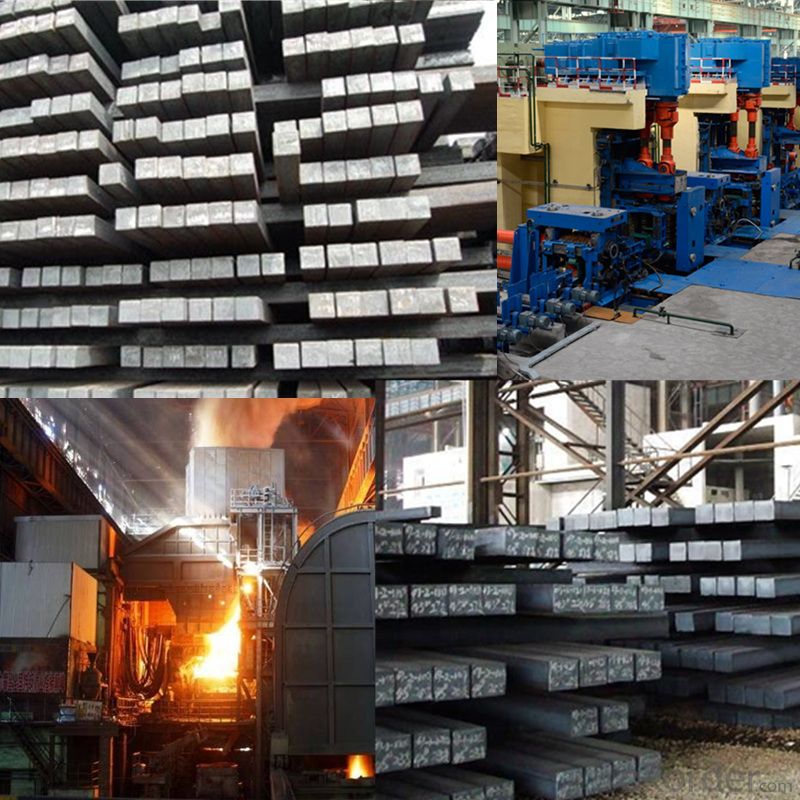
FAQ of Square Steel Billet Q235 Grade Prime Quality 1#
We have organized several common questions for our clients,may help you sincerely:
1. How Can I Visit There?
Our company is located in Tianjin City, China, near Beijing. You can fly to Tianjin Airport Directly. All our clients, from home or aboard, are warmly welcome to visit us!
2. How Can I Get Some Sample?
We are honored to offer you sample.
3. Why choose CNBM?
Our delivery time about 15-20days for standard sizes, if you have other requirements like hardness, quanity and width ,it is about 20-40days. But don't worry we also try our best for the delivery time ,because time longer and our cost is higher.
- Q: What are the common sizes and shapes of steel billets?
- Steel billets are typically manufactured in various sizes and shapes to cater to the diverse needs of different industries. The most common sizes of steel billets range from 100mm to 200mm in width and 100mm to 300mm in height. However, it is important to note that these dimensions can vary based on the specific requirements of the end-user or the steel manufacturer. In terms of shapes, steel billets are commonly produced in rectangular or square shapes. Rectangular billets have flat and smooth surfaces with four right angles, while square billets have equal sides with four right angles as well. These shapes are preferred because they facilitate easier handling, transportation, and further processing of the steel billets. Additionally, steel billets can also be produced in other shapes such as round, hexagonal, or octagonal, depending on the intended application. These non-traditional shapes are often utilized in specialized industries like automotive or aerospace manufacturing, where unique geometries are necessary to meet specific design requirements. It is worth mentioning that the sizes and shapes of steel billets can vary across different regions and industries, as each may have their own specific standards and preferences. Therefore, it is important for manufacturers and end-users to communicate and align their requirements to ensure the production of steel billets that meet their respective needs.
- Q: Are steel billets used in the manufacturing of tools?
- Yes, steel billets are commonly used in the manufacturing of tools. Steel billets serve as the starting material for various tool manufacturing processes, including forging, extrusion, and machining. These billets are typically heated and shaped into the desired tool form, which is then further processed and refined to create high-quality tools with excellent strength, durability, and performance.
- Q: How do steel billets contribute to the manufacturing of kitchen appliances?
- Steel billets are used as raw materials in the manufacturing of kitchen appliances because of their excellent strength, durability, and heat resistance properties. These billets are melted and formed into various shapes, such as sheets or rods, which are then used to create the structures and components of kitchen appliances. Steel billets ensure that kitchen appliances can withstand heavy use, high temperatures, and retain their structural integrity, making them an essential component in the manufacturing process.
- Q: How are steel billets used in the production of electrical appliances?
- The production of electrical appliances utilizes steel billets in multiple ways. Firstly, these billets serve as the primary material for manufacturing various electrical appliance components. Depending on the appliance's specific requirements, the billets can be formed and shaped into sheets, plates, bars, or wires. For instance, thin sheets rolled from steel billets are utilized in constructing the outer casing or body of appliances like refrigerators, washing machines, or air conditioners. These sheets offer durability, strength, and protection to the internal components of the appliance. Moreover, steel billets can undergo further processing to create bars or wires essential for electrical connections, circuit breakers, or switches. These components demand high electrical conductivity, heat resistance, and mechanical strength, all of which steel billets can provide. Furthermore, steel billets are crucial in the manufacturing of motors and transformers, integral to the operation of electrical appliances. These billets are shaped and machined to produce specific parts such as rotor cores, stator cores, or laminated cores, necessary for the efficient conversion of electrical energy. In conclusion, steel billets are of utmost importance in the production of electrical appliances as they serve as the essential raw material for creating casings, bars, wires, and cores. The properties of strength, durability, electrical conductivity, and heat resistance make them an ideal choice for ensuring the reliability and functionality of electrical appliances.
- Q: Are steel billets used in the production of household appliances?
- Yes, steel billets are used in the production of household appliances. Steel billets are semi-finished steel products that are used as raw material in various industries, including the manufacturing of household appliances. These billets are heated and then rolled or forged into different shapes and sizes to create components such as sheets, plates, rods, and bars that are used in the production of appliances. Steel is a preferred choice for household appliances due to its strength, durability, and resistance to corrosion. It is commonly used in the production of refrigerators, washing machines, dishwashers, ovens, and many other household appliances.
- Q: How are steel billets used in the production of automotive suspension components?
- Due to their strength, durability, and malleability, steel billets play a crucial role in manufacturing automotive suspension components. Billets, which are semi-finished steel products, are shaped into specific forms like bars or rods through a process called hot rolling. When it comes to automotive suspension components, the initial step involves heating the steel billets to a high temperature. Subsequently, they are passed through a series of rollers to achieve the desired shape, such as coil springs, shock absorber rods, or stabilizer bars. This hot rolling process refines the grain structure of the steel, resulting in improved mechanical properties. The utilization of steel billets in suspension components is vital because they provide the necessary strength and stiffness to withstand the various forces and loads faced during vehicle operation. For instance, coil springs bear the weight of the vehicle and ensure a comfortable ride by absorbing impacts and vibrations. Steel billets are preferred for automotive suspension components due to their high tensile strength, which enables them to endure heavy loads and maintain their shape over extended periods. Moreover, the malleability of steel allows for easy forming and shaping into intricate geometries, ensuring precise fit and functionality within the suspension system. Furthermore, steel billets offer excellent fatigue resistance, which is crucial for suspension components as they experience repetitive loading and unloading throughout the vehicle's lifespan. This fatigue resistance helps prevent failures and ensures a suspension system that is long-lasting and dependable. In conclusion, incorporating steel billets into the production of automotive suspension components is essential for achieving the necessary strength, durability, and performance required for safe and comfortable vehicle operation.
- Q: What are the different surface finishes available for tool steel billets?
- Tool steel billets offer a range of surface finishes to cater to different requirements and applications. Some commonly used surface finishes are as follows: 1. Hot Rolled: This is the most basic surface finish achieved by hot rolling the steel billets, resulting in a rough and scaled surface. It is suitable for applications where a smooth finish is not crucial. 2. Cold Rolled: For a smoother and refined surface finish, the steel billets undergo cold rolling. Cold rolled surfaces are preferred when a higher degree of precision and accuracy is required. 3. Turned: By using a lathe to remove material, the steel billet can achieve a smooth and polished surface finish. Turned surfaces are commonly employed in applications where aesthetic appearance and precision components are essential. 4. Ground: Grinding is employed to achieve a flat and smooth surface finish on tool steel billets. It is commonly utilized when a high level of precision and dimensional accuracy is necessary, particularly in tooling applications. 5. Polished: This is the most refined surface finish achieved by using abrasives and polishing compounds, resulting in a mirror-like surface. Polished surfaces are often chosen for decorative or high-end applications where a visually appealing finish is desired. 6. Coated: Additionally, tool steel billets can be coated with various materials to enhance their surface properties. Coatings such as nitride, carbide, or diamond-like carbon (DLC) can improve hardness, wear resistance, and friction properties. The choice of surface finish for tool steel billets depends on specific requirements, including desired accuracy, appearance, and performance characteristics.
- Q: How are steel billets used in the production of hydraulic components?
- Steel billets are an essential raw material used in the production of hydraulic components. These billets, which are semi-finished forms of steel, serve as the starting point for manufacturing various hydraulic parts. To begin with, steel billets are heated to high temperatures to make them malleable. This process is known as hot rolling, and it allows the billets to be easily shaped and formed into the desired hydraulic component. The hot billets are then passed through a series of rollers to achieve the desired size and shape, such as bars, rods, or tubes. Once the steel billets have been shaped, they undergo further machining processes to create specific hydraulic components. For example, they may be cut, drilled, or threaded to form pistons, cylinders, valve bodies, or other essential parts used in hydraulic systems. The use of steel billets in hydraulic component production offers several advantages. Firstly, steel is known for its high strength and durability, making it an ideal material for hydraulic applications where components are subjected to high pressure and heavy loads. Additionally, steel's excellent corrosion resistance ensures the longevity of hydraulic components, even in harsh operating conditions. Furthermore, steel billets allow for precise dimensional control during the manufacturing process. This ensures that the hydraulic components meet the required specifications and can seamlessly integrate into hydraulic systems without any compromise in performance. In conclusion, steel billets play a crucial role in the production of hydraulic components. By starting with these semi-finished forms of steel, manufacturers can create high-quality, durable, and precisely engineered parts that are vital for the efficient operation of hydraulic systems.
- Q: How are steel billets used in the manufacturing of rail tracks?
- Steel billets are used in the manufacturing of rail tracks as they serve as the raw material for the production of rails. These billets are heated and then rolled into the desired shape and size to create the rails. They provide the necessary strength, durability, and stability required to withstand the heavy loads and constant wear and tear experienced by rail tracks.
- Q: What are the different types of steel billet heat treatment processes?
- There are several types of steel billet heat treatment processes, including annealing, normalizing, quenching, and tempering. Annealing involves heating the billet to a high temperature and then slowly cooling it to relieve internal stresses and improve its ductility. Normalizing is similar to annealing but involves cooling the billet in still air to achieve a more uniform grain structure. Quenching is a rapid cooling process that involves immersing the billet in a quenching medium, such as water or oil, to achieve high hardness and strength. Tempering follows quenching and involves reheating the billet to a lower temperature to reduce brittleness and enhance toughness.
Send your message to us
Square Steel Billet Q235 Grade Prime Quality 1#
- Loading Port:
- Tianjin
- Payment Terms:
- TT OR LC
- Min Order Qty:
- 2000 m.t
- Supply Capability:
- 50000 m.t/month
OKorder Service Pledge
OKorder Financial Service
Similar products
Hot products
Hot Searches
Related keywords
